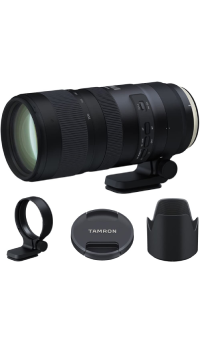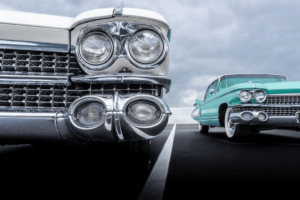A telephoto lens is a long-focus lens that captures a distant object and gives an enlarged image. The enlarging ability of these lenses is due to the presence of a telephoto group that elongates the light path even with a shorter physical design. As a result, it allows the photographers to choose a focal length shorter than its physical length. Generally, a lens is classified as a telephoto lens if it has a focal length of 70mm or longer. Further, a telephoto lens can be attached to the camera’s body which could be a DSLR, SLR, or even a smartphone camera.

Types of Telephoto Lens
The following are the types of Telephoto lenses:
- Short telephoto lens- 85mm to 135mm in 35mm film format
- Medium telephoto lens- 135mm to 300mm in 35mm film format
- Super telephoto lens- over 300mm in 35mm film format
Purpose of a Telephoto Lens
Whether you are a beginner, an amateur, or a professional photographer, a telephoto lens benefits you in the below-mentioned ways:
Faraway Objects Appear Closer
A telephoto lens captures distant objects easily as it compresses the distance between a subject and its environment. Additionally, these lenses capture the subject with precision as they magnify it and make them appear closer to the camera. As a result, these lenses are especially beneficial for wildlife photographers who cannot always get closer to their subjects. Additionally, in landscape photography, this compression effect blends the buildings of a city with the surrounding mountains rendering beautiful images.

Emphasizes Blurred Backgrounds
A telephoto lens shrinks your subject in the foreground while maintaining the background. A blurred background highlights your subject effectively and attracts your viewer’s eyes. This effect can be achieved when a longer lens is coupled with a wider aperture.

Subjects Appear Smaller Than the Background
When a telephoto lens is used with a longer focal length, the subject appears smaller compared to the background. Therefore, the facial features appear proportionally; hence, they are an excellent tool for portrait photography.

How to Choose a Telephoto Lens For Your Photography?
Your choice of telephoto lens depends on the scenarios listed below. Once you know your requirements, you can choose an appropriate lens:
- Your preferred type of photography
- Your camera
- Your budget
- Compatibility with your camera’s body
1. Settle Between Zoom or Prime
A telephoto lens is available as both zoom and prime lenses. To decide the type that fits you well, you need to understand its pros and cons. They include:
Prime Lenses | Zoom lenses | |
| Pros |
|
|
| Cons |
|
|
Despite the pros and cons, the choice of zoom or prime lenses depends entirely on your needs. For example, if you prefer to have a better image quality with a fixed focal length, you can opt for a prime lens, whereas a zoom lens comes into the picture when you want to photograph at different focal lengths quickly.
2. Determine the Focal Length
Telephoto lenses come in different focal lengths that dramatically impact a camera’s field of view. As a result, they open up the possibilities of full-frame photography you can shoot with a wide array of shutter speeds. Some of these lenses include:
| Focal Lengths | Features | Common Uses |
70-200mm |
| Portraits, weddings, sports, wildlife |
85mm Prime |
| Portraits, weddings |
100-400mm |
| Sports, wildlife |
135mm Prime |
| Portraits, sports, weddings, wildlife |
600mm (and Above) Prime |
| Sports, wildlife |
3. Look for Image stabilization
During photography, your lenses should have built-in image stabilization to combat camera shakes and vibrations. Long telephoto lenses experience vibration due to camera movements that can be nullified when shooting at high shutter speeds. However, this is impossible with a budget telephoto lens, owing to its slow maximum aperture. For lenses devoid of built-in vibration reduction and hefty super-telephoto lenses, you have to use a tripod to stabilize them.
4. Full frame lenses or Apsc lenses
Lenses are designed to fit the size of specific camera sensors. Hence they fall under two categories, namely:
- Full-frame lenses
- Apsc lenses
Full-frame lenses offer better image quality. However, based on your use, you need to know when to switch to APS-C lenses.
If you turn your lens the other way around, you will notice an imaging circle surrounding the optic in your camera body. This image circle teams up with the sensor in the camera, making the lenses work with specific sensor sizes. For example, a full-frame lens is similar to a 35mm film frame, while an APS-C sensor is smaller. Due to this size difference, the APS-C sensor magnifies your subject to match the full-frame lens’s image circle. The magnification rate is expressed as a numerical value called the crop factor, which varies for different camera brands. When a full-frame lens is mounted over a camera with an APS-C sensor, the resultant image is cropped due to crop factor. Therefore, your camera captures only a lesser part of your subject, suitable for portrait photography.
However, when you wish to capture the entire scene, as in wildlife photography, landscape photography, or sports photography, you must opt for an APS-C lens to mount over an APS-C sensor. Alternatively, you can use a full-frame or an APS-C lens over a full-frame camera sensor to produce stunning images.
Best Telephoto Lens for Different Cameras
Considering all the above scenarios, here we have compiled a list of the best telephoto lenses that suit other cameras:
| Type of camera | Suitable lenses |
| Canon Mirrorless camera | |
| Nikon DSLR Cameras | |
| Sony Cameras | |
| Smartphone cameras | |
| Canon DSLR cameras | |
| Fujifilm shooters |






Additionally, we have some lens recommendations based on your purpose. These include:
Purpose | Suitable lenses |
| Budget Lens (under $1000) | |
| All-in-One Lens | |
| For Portrait Photography | |
| For Enthusiasts | |
| For Sports | |
| For wildlife photography |






Usage Tips
Stabilization
Camera shake is a concern with longer lenses. Hence it would help to reduce the same to add sharpness and focus to your image, provided your subject is stationary.
Aperture
When you capture an image with a wide aperture, your camera shutter quickly closes, which helps, especially during low light conditions or when your subject is moving.
Shallow Depth of Field
You can produce images with a shallow depth of field when you shoot a subject with a longer lens and wider aperture. As a result, you can blur the background entirely and isolate your subject. This also balances the sharpness between the foreground and background.
Videos
How does a telephoto lens work?
How to use a long telephoto camera lens?
Frequently Asked Questions
Why are telephoto lenses so expensive?
Telephoto lenses are expensive because they contain elements that contribute to their complex construction. These elements help :
- Reduce chromatic aberrations
- Reduce vibration
- Cuts down ghosting and flare.
What is the difference between a telephoto and a zoom lens?
A telephoto lens is often confused with a zoom lens. For example, a lens whose focal length is greater than 70mm with a narrow field of view is called a telephoto lens. On the contrary, lenses whose focal lengths can be varied are classified as zoom lenses.
What Is the Difference Between a Telephoto Lens and a Wide Angle Lens?
A telephoto lens vastly differs from a wide-angle lens as it captures an enlarged image of faraway objects. In contrast, a wide-angle lens captures an extensive photo of an image.
Final Thoughts
If you want to escalate the quality of images and add a new dimension to your skill, investing in a telephoto lens is a great choice. However, always consider your niche or area of interest and the lens’s compatibility with your camera to explore and master your skill.













